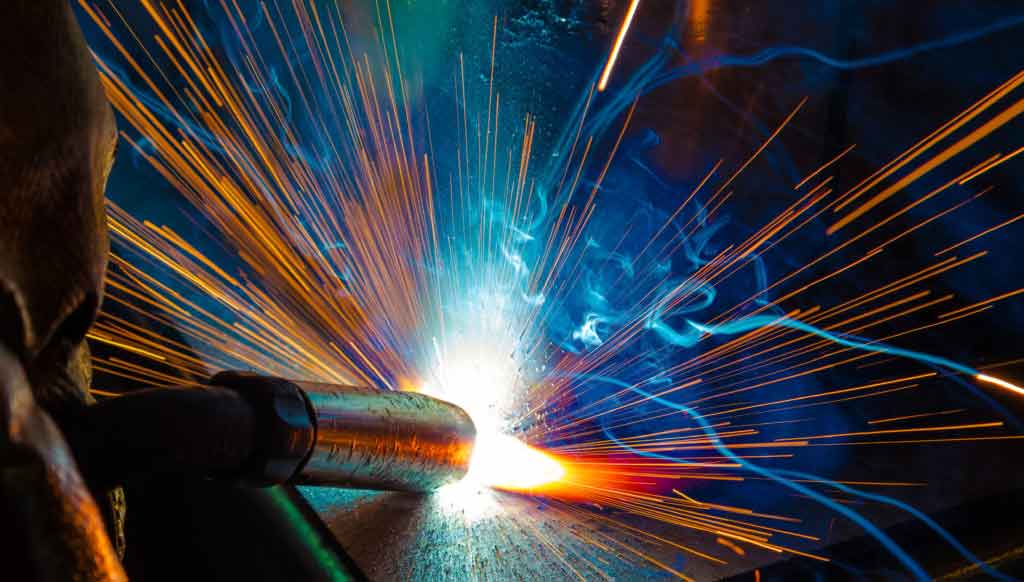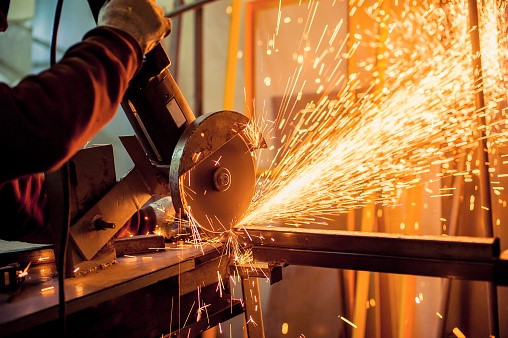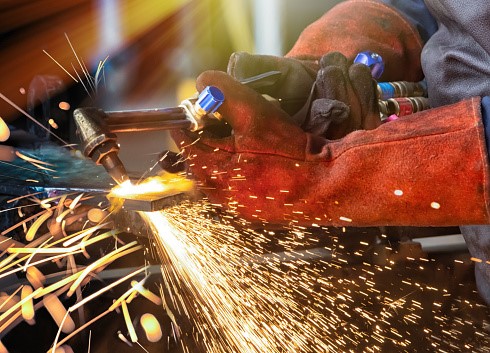
The Best Material for Welding
Industries are in the need of fabrication for the creation of parts and finished articles. Almost every metal can be welded but weldability differs from metal to metal. The choice of the best material for welding depends upon your project, its design, budget, the skill of the welder, and the welding technique used. We will summarize the best welding materials and their suitability.
The complex process of welding involves the science of electricity, heat, metallurgy, a different state of matter, and oxidation. We need the utmost care in selecting the best materials for welding to prevent weld failure.
Techniques of Welding with Different Metals
Welding makes a fusion of two metals for different applications and welding materials. The types of welding techniques which can complete the project are as follows.
➤ SMAW (Shielded Metal Arc Welding)
➤ MIG/GMAW (Gas Metal Arc Welding)
➤ TIG/GTAW (Gas Tungsten Arc Welding)
➤ FCAW (Flux Cored Arc Welding)
➤ Resistance Welding/Spot Welding/ Butt Welder
Every process has a separate way to join the metal and a distinct energy source to complete this fusion of base welding materials. Every welding metal has a distinct melting point and metallurgy character. They find better compatibility with some welding techniques.
Few welding metals require special equipment such as a vacuum, gas chamber, and pre, and post-welding treatment. Here is the welding materials list.
1. Low Carbon Mild Steel
Most Suitable methods for welding: Arc/Stick welding, MIG Welding, FCAW, DC TIG, and Resistance spot welding.
One of the best steel for welding and the most weldable metals since ancient times. With continuous improvement, it has gained the status of convenient metal for welding. The low amount of carbon (less than 0.03%) makes the metal more ductile. The more the ductility easier is the welding and the less the chance of brittleness in the heat zone. An increase in carbon leads to difficulty in welding.
2. Stainless Steel

Most suitable methods for welding: Arc/Stick welding, MIG welding, DC TIG welding, FCAW, and Resistance spot welding.
Stainless steel can readily be welded once proper technique and knowledge are applied. Out of three major types of stainless austenitic, ferritic, and martensitic, two can be welded but difficult with martensitic stainless steel. Ferritic stainless steels are easily weldable. As stainless steel warps under extreme heat, it can affect the final shape and strength of the workpiece.
The chromium in stainless steel may combine with carbon to form chromium oxide. The welded piece will become more susceptible to rust and corrosion without the chromium oxide protective layer. This issue can be won by not heating, or choosing low-carbon stainless steel.
3. Aluminum
Most suitable methods for welding: AC TIG, MIG, ARC/Stick
Aluminum has high thermal conductivity and thus dissipates the heat quickly from the weld zone. We require here a higher current power source. Choosing the grade of aluminum is important as it guides you to make the proper welding. We can weld grade in the series 1XXX without much effort. We can join a grade in the series 6XXX with a selection of Tig welding materials like proper filler material and a power source. Aluminum in 2XXX is not weldable generally.
We should be cautious as aluminum shrinks on cooling. It may lead to craters and cracks formation. Welding aluminum is an intricate process that needs a trained welder. The layer of aluminum oxide on the primary metal act as a contaminant. The weld material needs a thorough cleaning of the surface with a metal brush to avoid porosity in the weld zone.
4. Cast Iron
The most suitable method for welding: is ARC/Stick/SMAW
The high carbon content of cast iron poses more difficulty than steel and aluminum. This can be achieved by accurately assessing the alloy, cleaning the welding metal thoroughly, and preheating the metal. The gradual change in temperature will help to accomplish the task.
5. Titanium
The most suitable method for welding is DC TIG.
Titanium needs a blanket cover of the shielding gas. When the welder saves titanium from contamination and oxidation it achieves a lasting and strong result.
6. Magnesium Alloy

Most suitable method for welding: AC TIG
The Magnesium alloy shares similar properties as aluminum. The removal of oxide is mandatory before welding because the magnesium in the alloy has a much lower melting point than the oxides.
7. Copper & Brass
Most suitable method for welding: DC TIG
These welding metals have high resistance to corrosion. This property helps them to be a useful metal in the industry. We have to be careful of any alloy in the welding material of copper and brass. It may cause cracks in oxidation.
Guiding Chart to the Best Material for Welding
We have discussed the various types of welding techniques used for different welding metals. Each process has advantages and shortcomings. We have designed a chart to guide you to complete your welding project.
Which type of material do you want to fuse?
Every process has a distinct affiliation with some welding metals. Review the following handy chart.
| Metal Type | ARC/Stick | MIG | Flux Core | AC TIG | DC TIG | Spot |
| Mild Steel | ✓ | ✓ | ✓ | ✓ | ✓ | |
| Stainless Steel | ✓ | ✓ | ✓ | ✓ | ✓ | |
| Aluminum | ✓ | ✓ | ✓ | |||
| Cast Iron | ✓ | |||||
| Copper/ Brass | ✓ | |||||
| Magnesium Alloy | ✓ | |||||
| Titanium | ✓ |
Other Articles of weldability
What is the best metal for welding?
The best material for welding includes mild steel, aluminum, stainless steel, and others.
What is the easiest metal to weld?
Mild steel for its carbon content and better ductility is the easiest of other welding metals. This metal has been used since ancient times and has improved with stick welding.
What type of metal can be welded?
Arc welding used for steel, aluminum, and copper has a coating while Mig does not have any coating over the electrode.
What is the strongest weld for steel?
Tig welding material is the cleaner, more precise, stronger, and best welding the Mig and Arc welding processes.
What metal cannot weld?
Some metals in combination like aluminum and steel, and aluminum and copper, may face difficulty in joining.
What is the hardest metal to weld?
Aluminum is a metal that is very hard to weld due to its melting point, the conductivity of heat, and ductility.
